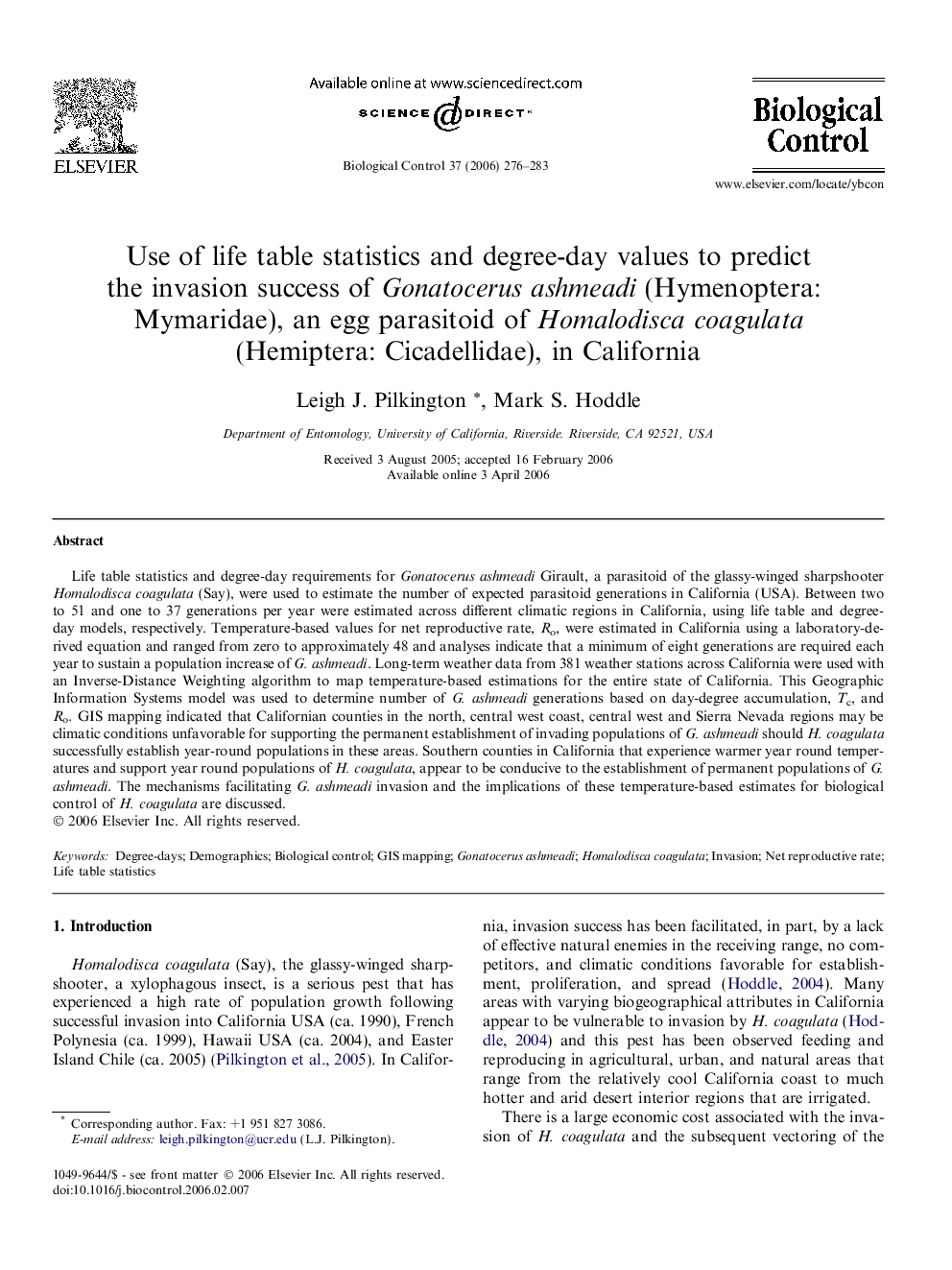| کد مقاله | کد نشریه | سال انتشار | مقاله انگلیسی | نسخه تمام متن |
|---|---|---|---|---|
| 4505339 | 1321139 | 2006 | 8 صفحه PDF | دانلود رایگان |

Life table statistics and degree-day requirements for Gonatocerus ashmeadi Girault, a parasitoid of the glassy-winged sharpshooter Homalodisca coagulata (Say), were used to estimate the number of expected parasitoid generations in California (USA). Between two to 51 and one to 37 generations per year were estimated across different climatic regions in California, using life table and degree-day models, respectively. Temperature-based values for net reproductive rate, Ro, were estimated in California using a laboratory-derived equation and ranged from zero to approximately 48 and analyses indicate that a minimum of eight generations are required each year to sustain a population increase of G. ashmeadi. Long-term weather data from 381 weather stations across California were used with an Inverse-Distance Weighting algorithm to map temperature-based estimations for the entire state of California. This Geographic Information Systems model was used to determine number of G. ashmeadi generations based on day-degree accumulation, Tc, and Ro. GIS mapping indicated that Californian counties in the north, central west coast, central west and Sierra Nevada regions may be climatic conditions unfavorable for supporting the permanent establishment of invading populations of G. ashmeadi should H. coagulata successfully establish year-round populations in these areas. Southern counties in California that experience warmer year round temperatures and support year round populations of H. coagulata, appear to be conducive to the establishment of permanent populations of G. ashmeadi. The mechanisms facilitating G. ashmeadi invasion and the implications of these temperature-based estimates for biological control of H. coagulata are discussed.
Journal: Biological Control - Volume 37, Issue 3, June 2006, Pages 276–283